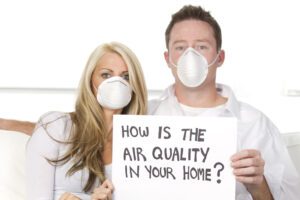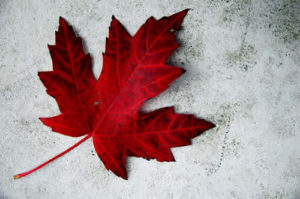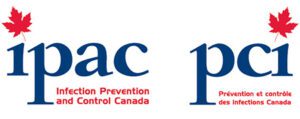Mold and Indoor Air Quality
Mold and Indoor Air Quality
From a mold and indoor air quality perspective, it is now a well-accepted fact that both dead and live mold / mold spores negatively affect air quality (IAQ) and subsequently human health. Most people, being health conscious people or those suffering from the presence of mold in their homes these days, need a certain level of knowledge and a lot of effort to clean and keep their environment healthy.
While different types of mold – black mold, toxic mold, allergenic mold – are present all the time around us and in the air we breathe. In Canada, we usually see a peak in mold counts starting in the Spring, peaking in the Summer and slowly dropping in the Fall. In low levels, molds and mold spores are generally harmless but if their levels increase they can affect people; especially people with allergies, asthma and respiratory conditions or suppressed immune system.
Germicidal UV light (UVC) has been successfully utilised in hospitals and public buildings to inhibit microbial growth, spreading of infections and to increase the indoor air quality. UVC can also help against mold problems by rendering airborne mold particles and mold spores non-viable and even sterilising surface mold colonies if they are directly irradiated with germicidal UV (UVC) light. Even the dead mold spores and mold particles can be allergenic or toxic so it is strongly recommended to always use germicidal UV light in conjunction with a good filtration system.
Before going into details of how UVC can be used against mold and for mold remediation let’s see what mold is, how it grows and multiplies and the hazards it presents to human health. Links to mold, toxic black mold, indoor air quality and health resources are published in our blog library, (https://mapleleafmold.ca/blog/


Mold: Volatile Organic Compounds & Mycotoxins : A Primer for Homeowners
Introduction
You can find a lot of information on mold, but trying to understand it may be difficult to those who didn’t take biology and chemistry. Even after stumbling through the pronunciation of these words, not everyone can comprehend what was meant by the statement: “Satratoxin, a low-molecular weight non-volatile organically derived agent, belongs to the macrocyclic trichothecene class of mycotoxins generated from fungal microorganisms.”
As an aid to the homeowner, this overview is intended to explain a few bad products of mold in a less scientific manner. It will focus on those types of mold that have been considered as problematic to the “indoor mold issue” and does not address other fungal organisms which may behave differently. Analogies presented are not intended to be scientifically accurate, but rather to illustrate complex behaviors in more simple terms.
The people who study mold (mycologists) have identified and described over 100,000 species and many believe that this is only a partial listing (estimates of 1.5 million species have been suggested). Try jotting down the names of the first 100,000 people you know then describe each person’s behavior in a specific setting. You will begin to understand the complexities of the problem facing these mold professionals.
Most people have associated mold with allergies and these reactions are certainly prevalent with most all species found indoors. In addition to causing an allergic response, molds can be irritating, infectious and even toxic to humans. Understanding the general behavior of mold provides insight into the adverse components produced by mold.
The Organism
Fungi can be considered nature’s garbage disposal. Without them, the term “biodegradable” would not be so significant to our planet and we would have mountains of leaves, dead trees, and other organic materials sitting around…all deposited since the beginning of time. This, in simple terms, is the ‘why’ of mold.
For the moment, think of mold as a weed. This weed has a root system, a vegetative stalk, and a seed pod. For mold, the root system is made up of hyphae (high-fee). As hyphae grows into a mass during the vegetative state, it becomes a mycelium (my-sill-ee-um). The spores, designed for reproduction, are similar to seeds.
Like a weed, mold needs food and water to survive (yes, both need more than that, however, we are simplifying things here). For mold, the food of preference is organic matter (things that once were living). Indoors, those things are wood, paper, organic dust and dirt, leather, skin flakes, body oils, etc.
When mold spores that are floating around in the air land on a food source, they sit there patiently waiting for water. If the item they land on should contain sufficient moisture, or water comes from another source (leaks, etc.), the spore germinates and hyphae grows. The hyphae branch out, secrete enzymes to breakdown the food, form the mycelium, and absorb nutrients to grow. As long as the food and water hold out, colonies will continue to grow. Note that individual hyphae and spores are very, very small and few can see them without a microscope. When you see visible mold, you are generally seeing that mass of mycelium.
Hyphae can intertwine into the fibers of the substrate, penetrating the pores. As it consumes the substrate, it can also create it’s own route by dissolving pathways into the material. This is one of the reasons it is so difficult to kill and/or clean up mold on organic substrates. If you remove the surface growth, those bits of hyphae within the substrate are ready for re-growth upon the return of moisture.
As the organism matures, it develops spores intended for reproduction. Spores vary in size, shape, weight and methods of distribution. Some are light and buoyant so they float easily through the air. Others are wet and sticky and may cling to insects, rodents, etc. as a mode of travel.


Volatile Organic Compounds
As mold “consumes” it’s food, the chemical reactions of enzymes, substrates and mold growth produce carbon dioxide, water, and volatile organic compounds (VOC). Because these items are a result of actions essential to the growth of the organism, they are classified as primary metabolites.
For mold, many types of VOC are produced and typically include aldehydes, alcohols, keytones, and hydrocarbons. They have complex structures and names like “2-methyl-1-propanol”, so if you are going to dig deeper into VOC, get ready for chemistry class.
They are called volatile in that they evaporate easily at room temperature and pressure. Fortunately, this volatility aids in dilution with fresh air to minimize concentrated build-up of these chemicals. Testing for VOC is often accomplished by using vacuum cylinders to obtain samples of the air with laboratory analysis obtained from sophisticated test instruments (gas chromatograph/mass spectrometer).
When you smell a “musty-moldy” odor, it’s generally the VOC you are noticing. VOC are often considered irritants to mucus membranes, however, are also capable of both short-term and long-term adverse health effects. If you do smell these odors, it’s a sure sign the mold is consuming and growing and you need to take action. (Note that VOC may also be derived from non-mold sources including natural materials used in cleaning agents.)
Toxins
Many molds are capable of producing compounds called mycotoxins which are toxic to other organisms, including people. Mycologists believe these toxins are produced as protection against competing organisms and therefore, humans are simply caught in the cross-fire of this fight for survival.
Since these toxins are not essential for growth, they are classified as secondary metabolites. Toxic secondary metabolites require extra work on the part of the organism so production does not occur at all times, or, with all types of mold.
Scientists have identified over 400 mycotoxins and unlike VOC, these compounds are usually non-volatile (don’t evaporate easily at room temperature and pressure). One strain of mold may produce multiple toxins and one type of toxin may be produced by multiple strains of mold. Research has indicated that the type of substrate (nutrients), the growing conditions, together with the species of mold, will impact which toxins are created.
Some of these toxic substances are considered extremely hazardous to people, unfortunately, quantified human dose-response data is limited. Lab and field studies have shown these compounds to produce severe toxic effects in both animals and humans and therefore, the general recommendation is to minimise exposure to potentially toxigenic mold. Symptoms from toxic exposure range from flu-like symptoms, skin rashes and lesions, bleeding, fatigue, difficulty breathing, depression, etc. to longer-term nerve and organ problems, altered immunity, and cancer.
Not all secondary metabolites are considered bad for people… the antibiotics such as penicillin have beneficial use. However, from the mycological standpoint, antibiotics are considered mycotoxins since they too are generated by mold to ward off microorganisms (i.e. competing bacteria).
When the organism is producing toxins, the toxins are known to be present in the cell wall of spores and hyphae. It’s relatively easy to test for spores and hyphae, however, testing these components to see if they contain toxins is significantly more complex. Whereas a single spore can be viewed under a microscope, identifying what compounds are contained in the cell wall is difficult.
In order to identify these toxic compounds, laboratories must have a sufficient quantity of toxin-containing spores and carefully process them through sophisticated and expensive equipment that is capable of isolating chemicals down to billionths of an gram (remember, mold spores are microscopic so what is contained within it’s cell wall is extremely small). This testing is made even more difficult since there are a few hundred toxins to analyze and the behavior of mold is such that a toxin-producing mold in the field doesn’t necessarily produce the same type and quantity of toxins in the lab.
Generally speaking, identifying a mold type that is known to be capable of producing toxins is sufficient information to warrant precautions and avoid exposure without submitting for toxic analysis. However, if trying to confirm specific adverse health effects, obtaining an analysis of both VOC and toxins can be beneficial but often expensive.


Maple Leaf Mold Inc. is a certified mold / asbestos removal and biological disinfection / air analysis company located in Toronto that uses certified IICRC technicians for all testing and remediation projects.
We are a professionally licensed firm experienced in testing, verifying and removing Mold / Asbestos / Lead and other environmental contaminants as well as providing disinfection services to control and kill biological contaminants.
Call 416-254-7256 to talk with us about your issue anytime.






